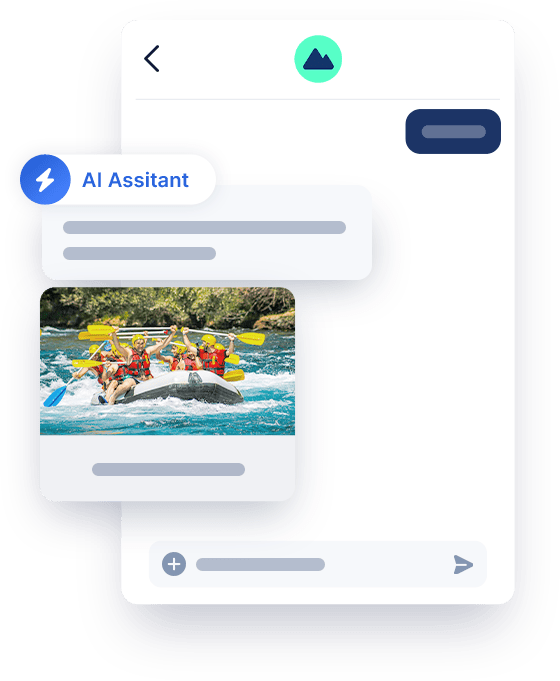The Cyborg Contact Center

Augmenting Your Human Workforce with Bots
No, this article isn’t about The Governator or Tony Stark taking over your contact center. It’s about augmenting your human workforce with bots and giving them some superpowers of their own.
Bots have become commonplace in recent years thanks to platforms like DialogFlow. They’ve been deployed across numerous messaging channels as well as voice. They have become increasingly conversational – using natural language to collect data and trigger workflows. With all of these advances, it might seem as though we’re living in the golden age of chatbots. So what’s missing?
The biggest omission is that many bot services result in bots that are only aware of the messages they’re exchanging with customers. They neglect the presence of human agents, and possibly other bots, participating within the same environment.
It makes sense that we ended up here. So much of the recent progress has been focused on increasing the intelligence and capabilities of bots such that they can single-handedly address more types of interactions without human involvement. Indeed, many businesses wish to put a bot in place on their website with no possibility of escalating to a live agent. By this point, many of us have interacted with such a bot with a need that surpassed the bot’s capabilities.
The Right Way To Combine Bots and Human Agents
The best approach is to combine bots and human agents. The bots can handle the common and repetitive customer intents, which will keep wait times down. Meanwhile, the human agents can help with infrequent or difficult conversations and keep the customer base happy. It’s a win-win for the business and its customers. But what is necessary to create such an environment? We count the top 5 foundational principles of an automated contact center:
1. Shared Customer Session
 The first foundational requirement is a shared customer session. This means that all of the messages exchanged between the customer and a combination of human agents and bots are stored on the same conversation record. The same must be true of any structured data that is gathered or extracted from the exchanged messages. We’ve all been through the painful process of providing our personal info over a telephony system, getting transferred, and then being forced to provide the same information again.
The first foundational requirement is a shared customer session. This means that all of the messages exchanged between the customer and a combination of human agents and bots are stored on the same conversation record. The same must be true of any structured data that is gathered or extracted from the exchanged messages. We’ve all been through the painful process of providing our personal info over a telephony system, getting transferred, and then being forced to provide the same information again.
This same problem is prevalent in chatbots and is no less annoying. Many bot services make it possible to receive the session data such that you can inject it into another platform, but this requires custom coding and can result in a disjointed customer experience. Ideally the session data will be tracked and transferred seamlessly and automatically by the system.
2. Escalation & Transfer as First Order Concepts
In order for bots and humans to cooperate, they must be able to pass conversations between them. This can be accomplished by direct transfer (e.g. a human agent transferring directly to a specific bot) or through escalation (e.g. a bot routes the conversation to a human agent queue based on the intent).
The concepts of escalation and transfer shouldn’t be arcane things that require custom coding. They should be first-order concepts that are visible in a workflow designer and thus configurable by administrators. Put another way, the ability to move conversations around between segments of your workforce (including bots) should be fully commoditized.
3. Open-Ended Workflows
The most obvious bot-enabled workflow is to have all conversations start with a bot, which will dutifully deflect as many inquiries as possible from live agents and escalate as necessary based on intent. However, there are many other useful workflows.
A human agent should be able to transfer to a bot mid-conversation (e.g. to help with a repetitive task) and know that the bot will send the conversation right back to them once the task is complete. Bots should also be able to conclude conversations by doing things like administering in-channel surveys. The bottom line is that, by virtue of commoditized escalation and transfer, you should be able to inject bots whenever the time is right.
4. Bot Awareness of the Contact Center & Workforce
In the spirit of bots being a cooperative part of a contact center, they should be able to see and make decisions based on information about the contact center and workforce. What sort of data might they inspect?
- Business hours & holiday schedule
- Human agent staffing (how many available agents)
- Estimated wait times and depth of various queues
By making decisions on such data, the bot can do the following:
- Take away the ability to escalate to live agents if queues are too deep
- Limit the supported conversational intents based on the staffing of skill-based live agent queues
- Provide the appropriate guidance and options after-hours or during holidays
The preceding capabilities should be readily accessible in the bot design experience because these types of requirements can change frequently.
5. Bot-to-Bot Cooperation
The last foundational element has been hinted at several times already. When you think about augmenting your contact center, you should consider not just one, but potentially multiple, bots with specific purposes. While “one bot to rule them all” may sound tempting, by utilizing multiple bots you can keep your bots simpler, more manageable, and independently updateable.
This is very useful if your business consists of multiple departments that need to administer their bot flows independently. Of course, the bots should be able to transfer to one another easily and all data should be shared in order to provide the best customer experience.

By now it’s hopefully clear that the ideal bot deployment will consist of bots that are an integral part of your contact center, not something bolted onto your existing operations. At Quiq, we designed our bot framework with this goal in mind from the outset.
The aforementioned foundational principles are all commoditized and available to visual designers. If you’d like to learn more, please contact us. We believe Quiq can truly give your contact center superhuman powers.
 Author: Kyle McIntyre
Author: Kyle McIntyre




